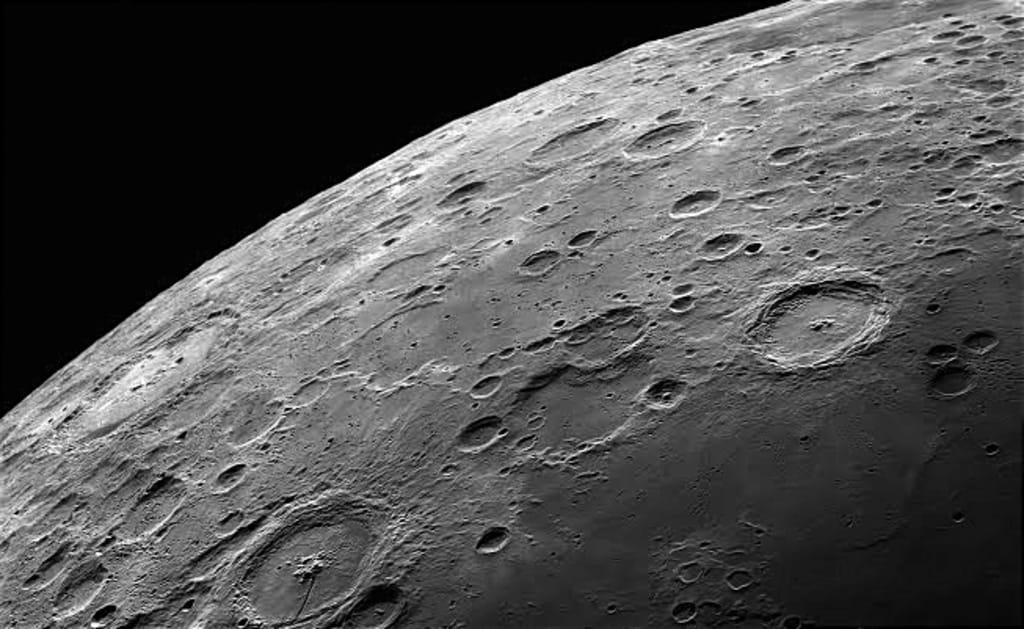The Moon Crater Mystery
Uncovering the Secrets of Lunar Geology

The Moon is a fascinating celestial body that has captured human imagination for centuries. One of its most distinguishing features is its surface, which is marked by numerous craters of varying sizes and shapes.
These craters have puzzled scientists and amateur astronomers alike for generations, leading to the development of various theories about how they were formed and what they can tell us about the Moon's geology.
What are Moon Craters and How are they Formed?
Moon craters are circular or elliptical depressions on the lunar surface caused by the impact of meteoroids, asteroids, or comets. The impact of these cosmic bodies generates enormous amounts of heat and pressure, leading to the vaporization of the impacting object and the surface material, which then cools and solidifies, leaving behind a bowl-shaped depression. Some craters have central peaks or multiple rims, which are caused by the rebound of the impact site after the initial shockwave has dissipated.
The size and shape of a crater depend on various factors, such as the size, velocity, and angle of impact, as well as the composition and density of the impacting object and the surface material. Small impacts can create simple craters, which are bowl-shaped and have a single rim. Larger impacts can create complex craters, which have central peaks, terraced walls, and multiple rims. The largest impact craters on the Moon are over 1,000 kilometers in diameter and are known as basins.
Exploring the Moon Crater Landscape
The Moon's crater landscape is a treasure trove of geological information that can help us understand the history and evolution of the Moon and the Solar System. The first detailed maps of the Moon's surface were made by NASA's Lunar Orbiter missions in the 1960s and 1970s, which revealed the extent and diversity of the lunar crater field. Subsequent missions, such as the Apollo missions, the Lunar Reconnaissance Orbiter (LRO), and the Lunar Crater Observation and Sensing Satellite (LCROSS), have provided more detailed and high-resolution data on the Moon's craters.
These missions have shown that the Moon's crater field is not uniform and that different regions have different types and densities of craters. For example, the highlands have more and older craters, while the mare regions have fewer and younger craters. This suggests that the Moon's surface has undergone different stages of geological activity, including volcanic activity and impact events, which have altered the crater landscape over time.
The Scientific Significance of Moon Craters
Moon craters are not only fascinating to look at but also provide valuable insights into the Moon's geology and the history of the Solar System. By studying the size, distribution, and composition of craters, scientists can estimate the age of the lunar surface and the frequency and intensity of impact events in the past. This information can help us understand how the Moon was formed, how it evolved over time, and how it relates to other planetary bodies in the Solar System.
Moon craters also provide clues about the composition and structure of the Moon's interior. The central peaks and terraced walls of complex craters can reveal the layers and properties of the lunar crust and mantle, which can help us understand the Moon's thermal history and its relationship to Earth. The ejecta from craters can also provide samples of the lunar surface material, which can be analyzed to determine its chemical and mineralogical composition
The Future of Moon Crater Exploration
The exploration of Moon craters is far from over, and there are many exciting projects and missions underway that aim to expand our knowledge of the lunar geology.
One of the most ambitious projects is NASA's Artemis program, which aims to establish a sustainable human presence on the Moon by the end of the decade. The program includes the Artemis III mission, which will land the first woman and next man on the lunar surface in 2024. The mission will focus on exploring the Moon's South Pole, which is rich in water ice and other resources that could be used to support human exploration and settlement.
Another mission that is currently underway is the Lunar Trailblazer, a NASA mission that aims to map the Moon's water resources and their distribution in the lunar soil. The mission will use a specialized instrument called a spectrometer to detect the presence of water molecules in the lunar surface material and map their distribution across the Moon's surface. This information could be crucial for future human missions to the Moon, as water is essential for life support and fuel production.
Other missions that are in the planning stages include the Lunar Volatile and Mineralogy Mapping Orbiter (LUVMI), a joint mission between NASA and the Indian Space Research Organization (ISRO) that aims to map the Moon's volatile and mineral resources, and the Lunar Surface Innovation Initiative, a NASA program that aims to develop new technologies and approaches for exploring the lunar surface.
The future of Moon crater exploration is not only about scientific research but also about commercial and strategic interests. The Moon's resources, such as water, helium-3, and rare metals, could be of immense value for space exploration and settlement, and several private companies and national space agencies are already developing plans to exploit these resources






Comments (1)
👍